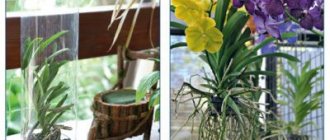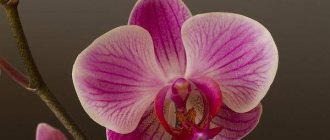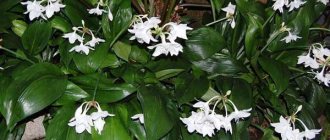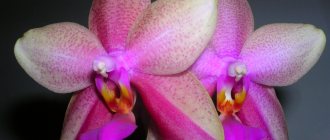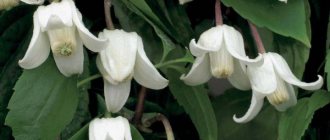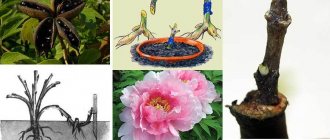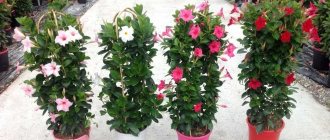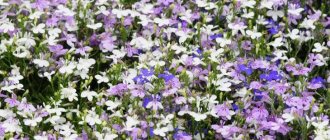Description
The popular name “butterfly” appealed to many phalaenopsis lovers. Fantasy suggests a similarity between the shape of the sepals (side petals) and the wings of a butterfly.
Big lip means “big lips” and indeed, the middle of the flower has an unusually large and unfolded lower petal.
The texture of the petals is delicate, tender, easily damaged, and does not tolerate transportation well.
Attention! A distinctive feature of this species is the complex, expanded shape of the lip. The standard phalaenopsis has a cupped lip. Big linden is distinguished by such expanded petals that the lower one becomes completely flat.
Color shades are not important for the classification of this group of phalaenopsis.
Distinctive characteristics of the species
Phalaenopsis Big Lip is a large-flowered orchid. The flowers of all phalaenopsis have the same structure - two circles of petals: the outer (sepals) and the inner (petals). There is also a lower petal called the lip (labellum). It is designed to make it easier for insects to penetrate the flower.
In the Big Lip variety, this petal is quite large and has a flat shape, which is why the flower got its name (Big Lip).
Main characteristics of the variety:
- Short thick stem.
- There are aerial roots, characteristic of epiphytes, covered with a layer of velamen.
- The leaves are wide, dark green, and do not change color throughout life.
- Peduncles are long, up to 70 cm, directed upward.
- The flowers are quite large, up to 10 cm, the lower petal is large, unfolded, almost flat.
- Flowering is long, up to 2–2.5 months, flowering is possible 2 times a year, the dormant period is up to 6 months.
- With proper care, they can begin to bloom at any time of the year after a period of dormancy.
- The colors vary depending on the subspecies; they can have contrasting colors, as well as patterns on the petals in the form of dots or veins.
Examples of phalaenopsis orchid varieties Big Linden
Leontin
An attractive hybrid with white petals and a pale purple pattern on a curly, spread lip with teeth at the bottom.
Photo of phalaenopsis Leontin Big Lip.
Melody
A whimsical flower framed with a fuchsia border. The petals are brightly colored with a pattern of crimson and burgundy veins on a light background.
Fal. Melody Big Lip.
Multiflora
But behind the name Multiflora anything can be hidden! More precisely, multi-colored hybrids with flowers less than 6 cm in diameter, with an expanded lip shape.
One of the variants of Multiflora Big Lip.
Flower varieties, photo
Despite the considerable age of Big Lip, there are quite a few species in the genus. The flower is rarely found in stores, although it can be purchased online. Therefore, it will not be superfluous to read the descriptions of the most common varieties and see how they look in the photo.
Important: scammers, or simply unknowing people, often sell phalaenopsis similar to Big Lip online, but in fact they distribute other groups of orchids. The price tag for a rare plant is too high.
Leontin
It was presented to the general public in 2012 in Holland. The hybrid was named after the famous Dutch TV presenter Leontine Borsato. It is distinguished by its huge snow-white petals. The wide lip has three divisions, small pink spots like freckles, and two short curled antennae in the middle. Petals shimmer in artificial light, as if sprinkled with colorless sparkles. The buds are located quite closely, and this gives the plant a special chic.
Melody
An unusual appearance with a fuchsia petal border. Bright “wreaths” and spots of crimson or burgundy color. Three wide petals provide the main texture of the bud, but the monochromatic lip creates an eye-catching highlight. The leaves are quite short, round in shape and with one vein in the middle.
Multiflora
Almost monochromatic, with a barely noticeable transition from light to more saturated shade. It can be orange in color, atypical for an orchid of this kind, or pink, quite common. The leaf blades are slightly elongated, but the overall shape is round.
Yellow
Flowers with pale lemon color and white lip. They stretch wide thanks to the original shape of the petals. An amazing linden aroma appears immediately after the bud opens. In most cases it only lasts for the first day.
Splash
The appearance of the plant really evokes associations with purple splashes on white petals. They differ in shape from each other even on buds from the same peduncle. A lip characteristic of the genus with pronounced teeth, but not so large.
Princess Sakura
Delicate pink petals with iridescent gradient stains of a more saturated shade. The coating flickers under artificial light. The regular shape of the petals really resembles the ovaries of a Japanese tree. The spots on the lip are brighter and, unlike others, it is divided into four parts, not three.
Habitat, area of distribution
Natural species of phalaenopsis are common in Taiwan, Madagascar, Australia, the Philippines and many other warm regions around the world.
It is impossible to find plants in monsoon rainforests that we see on store shelves labeled “Big lip”. These attractive, colorful hybrids were bred at phalaenopsis farms in Taiwan by talented botanists.
Repeated crossing of natural species gives rich results, thanks to which we can enjoy beautiful Big Linden hybrids.
Diseases and pests
The most common diseases of the Big Lip orchid are anthracnose and root rot.
Necessary:
- Remove affected areas.
- Treat the slices with cinnamon or charcoal.
- Be sure to replace the substrate.
- Treat the plant with a fungicidal agent.
If a flower is damaged by pests (spider mites, aphids or scale insects), the plant must be thoroughly washed and treated with phytoverm, repeating this procedure three times at intervals of a week.
Color options
Many varieties of colors of this species have been created: snow-white, bright fuchsia, delicate pinkish lilac, deep purple, orange, decorated with dots and veins, with a contrasting lip. An experienced eye can determine whether it belongs to the Big Linden species by the shape of the center of the petals, regardless of the shades of the corolla.
Big Lindens have a lot of color options.
Distinctive features of phalaenopsis
Phalaenopsis Multiflora has a bowl of 4–6 (some varieties – 10–12) large shiny leaves up to 40 cm long, next to which peduncles grow directly from the soil. The stem is almost invisible, because it is poorly developed and densely covered with leaves.
The peduncle is a long (up to 60 cm) branched stem; a lush floral corolla is formed at the top of each branch. The flowers are small, but numerous: so that the corolla of Multiflora is approximately equal in size to the flower of an ordinary classic phalaenopsis. It is distinguished by the special airiness of its inflorescences.
Some subspecies have a fairly large lip and belong to the Big Lip phalaenopsis class.
The colors of Multiflora in the varietal variety are different, the most popular colors are:
- pink of all possible shades;
- white;
- lilac (from the lightest to almost purple);
- yellow;
- peach;
- coral;
- various combinations of the above colors and shades.
The standard flowering period is twice a year, but thanks to regular renewal and with proper care, the orchid can bloom all year round: old flower stalks will be replaced by new ones without a time interval between flowering.
Landing
The rules for planting hybrid phalaenopsis are simple.
Priming
Large boiled bark is best suited for the substrate
Long-term digestion cleanses the material of parasites, fungi and excess essential oils.
Additives in the form of coal and sphagnum moss, coconut chips are optional , and it is better to completely exclude sphagnum. It accumulates water and promotes rot.
Optimal capacity
The pot must accommodate the roots, let in light and air, and have holes to drain excess water. Everything else affects only the aesthetics of the interior design and has nothing to do with floriculture. A glass pot has a slight weight advantage - it won't tip over due to hanging fleshy leaves.
Landing Features
Trim off all diseased roots - leave only clean and green ones , sprinkle the sections with crushed coal. The soil must be laid so that the plant does not wobble in the pot. The roots should not be squeezed, otherwise they will die.
Advice! Do not try to fill all the voids in the soil. In nature, orchids grow in tree hollows and similar places, their roots are aerial, and more air is only good for them.
Butterfly, babulette and trilips
Butterfly - no comments here. The phalaenopsis flower clearly resembles a butterfly due to the characteristic creases or pinches on the petals and their broken edges. This type of mutation is very decorative and often a butterfly orchid will be much more expensive than the same one, but with a traditional flower shape. An orchid flower with the babulette mutation is similar to a butterfly, but the petals are rounded, concave in shape and small in size compared to the flower. Trilips is also a subspecies of butterfly, the petals are the same in shape and color as the lip. I have never seen them on public sale, mostly from collectors and to order. Read how to choose an orchid in a store here.
I have one butterfly phalaenopsis, the variety is called Scrabble.
In bloom all year round, although no more than 7 open flowers at a time. It doesn’t work with other butterflies, probably due to mutation they are weaker than ordinary hybrids and are very susceptible to rot. There are no babulettes or trilips in the collection, so no photos. So, not all mutants live in the wild and cause terror. The most beautiful and peaceful orchids from the world deserve to take a special place on your windowsill.
Helpful information? Save it and share with your friends .
Features of care
Optimal conditions of detention
Phalaenopsis hybrids were bred for the living room and love almost the same conditions as humans:
- bright diffused light (in winter, additional illumination with a phytolamp is needed);
- temperature 22-24°C during the day, 18-20°C at night (permissible up to 28°C with protection from direct sunlight);
- dormancy, especially during the growth period - do not frequently rearrange or rotate the plant, especially during the budding phase;
- high humidity (can be created using a tray of water or a household humidifier);
- suitable watering regime.
Attention! Sometimes you can come across advice to leave the window open at night in the room where the orchid lives. Is it dangerous! Drafts and cold can destroy the plant; in such conditions, rusty spots of rot appear on the roots.
Replanting after shopping in a store
Conditions at retail outlets where phalaenopsis are sold dictate their own rules. If you can see pieces of sphagnum moss, dark areas of roots, and foreign inclusions in the pot, it means you can’t do without replanting.
Wait until flowering is over and if the plant looks healthy, replant it in clean, coarse bark. The main goal is to remove diseased roots and moisture-retaining components: pieces of sponge, moss.
Watering and fertilizing
Watering is carried out after the soil has completely dried . The roots of a plant that is time to water turn pale. Fertilizing can be combined with immersion watering by first dissolving the fertilizer in water. Conventional flower preparations are not suitable ; they can settle on the ground and poison the roots. A complex mineral for orchids is what you need.
Watering is best done by immersion in water.
Carefully! Never feed a blooming orchid. As soon as the buds have formed, stop fertilizing.
Stimulating flowering
A healthy plant that is at least 3 years old can bloom. A difference between night and day temperatures is required: 18 C at night, 24 C during the day. A general decrease in temperature for a couple of months helps - this makes it easier for the plant to grow flower stalks.
If all the previous steps have been completed, but there are no flowers, you can use special means:
- epin;
- succinic acid;
- cetokininic acid to stimulate the kidneys.
The instructions for each drug contain a detailed description of how to help the orchid bloom.
Pruning after flowering
Above the second flower bud , when the bud at the end of the peduncle has turned yellow, you can cut it off. It is more difficult to grow a peduncle from a bud between the leaves than a new branch, so it is worth giving the plant a chance to make its life easier.
Prevention of diseases and pests
- do not overwater - the roots will rot from excess water;
- do not overfeed - the leaves may crack and general poisoning of the plant may occur;
- protect from drafts - sunburn and cold window sills in winter frosts: the ancestors of indoor orchids grow in tropical forests, so our green favorites are real sissies;
- 1 month quarantine for new flowers brought into the house - insidious pests and diseases are always happy to move to new plants from your collection. They can’t always be seen right away, but problems will manifest themselves within 30 days.
Excess moisture can cause roots to rot.
Home care
Orchids are not too demanding to care for. But still, the basic principles of growing and maintaining orchids should be observed:
- Watering. The best way to water orchids is to place the flower pot in a bowl of clean water at room temperature for 20–30 minutes. After this, you must wait until the excess water drains and then put the flower in its usual place. The frequency of procedures depends on the condition of the soil; it is required that it dry completely between waterings.
- The temperature should be without sudden changes, +18…+25 °C, air humidity at least 40%.
- The light required for Big Lip phalaenopsis is diffused but bright. Direct sunlight may cause burns. In winter, supplementary lighting with a phytolamp is desirable.
Watch the video on how to properly transplant the phalaenopsis Big Lip:
Orchids of the Big Lip variety, with adequate care, can delight the amateur gardener with long-lasting and extremely beautiful flowering.
Reproduction methods
Big limes are easily propagated at home by vegetative means. A baby can only form on a healthy, fully developed plant.
The stimulus can be stress - an artificially created drought or a temporary drop in temperature to 18-20°C. If leaves appear on the flower branch, it means it worked! Now we need to wait for the root system to develop and plant a new plant in a separate pot.
Prevention
It should be understood that proper care is the main measure to prevent any ailments and difficulties with the plant. Follow all the recommendations, and another unique masterpiece of nature will appear in your collection of beauties. After all, even being of the same variety, these flowers are all unique.
No photograph can convey the true beauty of a living orchid. It has always been considered a symbol of sophistication and refined taste, and therefore requires special treatment. Although unusually fragile in appearance, the long-lived Big Lip will always delight you with lush blooms if you give it your attention and care.
Singolo orchid transplant
Transplantation is a radical change in the life of any phalaenopsis. Singalo is extremely vulnerable. A change in conditions of detention or an inept transplant puts it into a deep state of stress. It can freeze completely, stop growing and flowering, and remain in this state for a long time, sometimes up to a year.
Therefore, they prepare for transplantation carefully and carry it out carefully. Transplanting in autumn or winter is the most inappropriate option. This is done only if serious root problems are discovered after purchase.
Choosing a pot
The best choice for singolo is transparent plastic, which has at least 5 holes at the bottom for draining water and a significant amount on the sides for air access to the roots.
A plastic transparent pot will allow you to assess the condition of the roots.
Clay pots are environmentally friendly, breathable, but not entirely comfortable. Phalaenopsis firmly “sticks” to their inner surface, and there is a possibility of damaging the root during replanting.
Phalaenopsis Singolo look beautiful in group plantings
If you use a closed system, then narrowed flowerpots are not suitable for singolo. Its roots are thick and short, they will not receive enough moisture, and the leaves will quickly lose turgor.
Substrate preparation
The substrate prepared for orchid transplantation must be permeable for water and oxygen to reach the roots, i.e. loose and drained. Typically, it is a mixture of pine bark and charcoal (10:1).
The bark is dried before use to avoid mold.
Pebbles or foam fractions mixed with pieces of coal are used as drainage. Expanded clay is often used. You can buy the substrate or prepare it yourself.
Recommended proportions:
- conifer bark – 70%;
- sphagnum moss – 10%;
- foam plastic (expanded clay) – 15%;
- charcoal – 5%.
For singolo, it is advisable to add sphagnum to the soil to increase moisture capacity.
Planned or emergency transplant
The newly acquired phalaenopsis singolo has roots so thick that the plant sometimes almost completely crawls out of the purchased pots. Therefore, after adaptation, it is transplanted.
Subsequently, the development of roots is observed. The signal for replanting is strong growth of roots, their appearance in the drainage holes. The orchid also turns yellow and drops its lower leaves, exposing the trunk.
Frequent transplants are undesirable for singolos. It is recommended to carry them out once every 2-3 years.
But, there are times when a transplant is performed urgently.
An orchid transplant is necessary if:
- Phalaenopsis has a lot of black, dead roots due to fungal or putrefactive infections;
- suddenly all the leaves fell off;
- a layer of white salt deposit appears on the substrate - this is a signal of alkalization of the soil. In it, all nutrients are converted into compounds inaccessible to orchids, especially phosphorus, which is necessary for flowering;
- the substrate has turned into dust, has become too compacted, and this makes it difficult for oxygen to reach the roots.
The best time to repot is spring, but it can be done at any time during the beginning of the growing season when the plant produces new growth.
Step-by-step technology
The transplant is performed as follows:
Place the pot with phalaenopsis for 20 minutes in warm water (possibly with an anti-stress drug) so that the roots absorb moisture and become more elastic. Wrinkle the pot a little with your hands, tilt it and separate the roots from the walls. Do this with rocking movements with little effort. You cannot use force
If the roots are packed tightly, it is better to cut the pot. Carefully remove the orchid. Remove pieces of old soil bark using tweezers.
If the roots are firmly attached to the bark, then these pieces are left. They inspect the roots and remove spoiled, rotten and dry ones, sprinkle the cuts with crushed coal. Place drainage on the bottom of the pot, then a thin layer of sphagnum and a little bark. The prepared singolo root is placed on top. Pieces of fresh substrate are distributed between the roots, shaking the pot slightly so that the bark is evenly distributed and there are no large voids left.
Larger pieces of bark are placed in the center. On the sides and top - fractions of 1-1.5 cm.
After transplantation, the root should sit firmly in the pot, but the root collar should not be deeply buried
Content issues
The hybrid variety Big Lip is considered one of the most unpretentious phalaenopsis. Problems in its cultivation are most often caused by ignorance of basic care rules.
Diseases and pests and methods of combating them
The most common pests that attack phalaenopsis are:
- mealybug;
- spider mite;
- coccids.
Insecticides are used to combat them.
Plants are also susceptible to viral and fungal diseases
To prevent their development, it is important to timely assess the condition of the orchid and establish the cause of the problem.
| Signs | Diseases | Fighting methods |
| The appearance of plaque or stains on leaf plates | Fungal infection | Moderation of watering, low air humidity |
| Spongy, light yellow spotting | The presence of bacteria, the growth of which is often caused by contaminated water or untreated instruments | Preventive measures: fresh soil and air, hygiene of leaves, root system |
| Spots and stripes on petals and leaves | Viral disease |
Prevention methods
To prevent the appearance of pests and diseases, you should adhere to the following rules:
- Do not overdry the soil.
- Water orchids with clean, filtered or rain water.
- Maintain the required humidity.
- Apply fertilizers.
- Monitor the air temperature in the room.
- At the first symptoms of damage, place the plant in quarantine.
Characteristics of the variety “Yellow Pearl”
The variety “Yellow Pearl” is especially popular. This phalaenopsis is appreciated by fans for its long flowering period; the buds linger on the peduncle for 2-3 months. Another feature is that the variety is quite aromatic. The rosette of leaves itself looks neat, it is dense and compact, the plates have a rich green tint. The leaves themselves reach 20 cm in length, the peduncle grows up to 1 m.
The flowers look exquisite. The main petals, located in a circle, have a pleasant soft yellow hue. The middle is pink, and the lip is elongated. The diameter of the bud is more than 7 cm.
What to do if it doesn't happen?
What needs to be done to ensure that your pet pleases you not only with its greenery, but also with the delicacy of its flowers.
- Provide sufficient light. Don't forget that he must be absent-minded. No direct sunlight!
- Don't over-water the soil. Phalaenopsis should be watered only after two to three days have passed since the top layer of soil has become dry. You can even arrange a dry period for the plant. The fact is that in the tropics during prolonged rains there are no insects that pollinate the flower. Therefore, at home, Big Lip behaves similarly: there is a lot of water, which means it is not time to bloom yet.
- Fertilizers must be correct and dosed. For example, if there is too much potassium in a nutrient complex, the green part of the plant will develop. if you want to see as many blossoming buds as possible, use nitrogen-phosphorus fertilizers for this.
- Cheer up Lenotina. To do this, it is necessary to organize stressful conditions for her. This could include lowering the temperature, moving it to a dark place (but don’t get carried away with changing places too often—the orchid doesn’t like that), or reducing watering.
